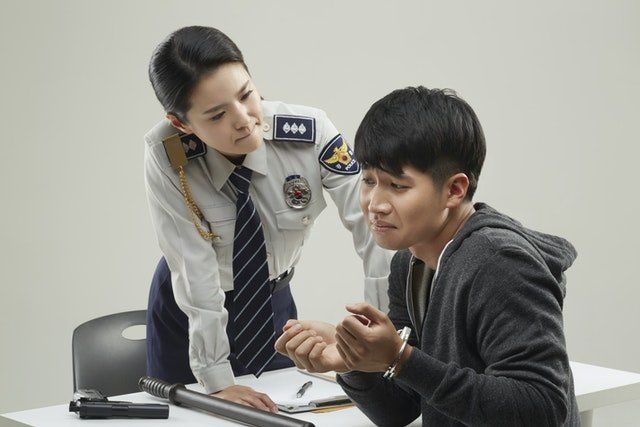4 Ways To Build The Next Generation Of Leaders

Every school holiday season, Leaderonomics organises leadership camps for children and teens. In these camps, we sometimes run an activity where campers discuss and imagine their dream school.
They are assigned to different groups and given some time – and lots of markers! – to draw out the blueprint of what the best school in the world would look like for them. Needless to say, it rarely resembles what reality has to offer.
Some people may think that these “dream” schools would contain only frivolous nothings and fanciful wishes that contribute zilch towards an actual education.
Yet, again and again, while we see some crazy, way out ideas (roller coasters to take you to class), and some delightful ones (stress relief rooms with cuddly animals), we also are reminded that youth care about learning.
They build giant, well-equipped science labs; they dream up dedicated buildings for arts and creative learning; they long for libraries filled with books and hidden corners for reading; they design gyms and parks for physical activity and quiet spaces for relaxing and unwinding.
Youth desire to have the space and freedom to learn and to grow according to their interests and passions. Are they being given enough of these opportunities?

Recently, we concluded our annual LEAD Convention, organised by members of our Leaderonomics Clubs in schools.
The convention saw about 160 teens from different schools coming together to share and showcase the Make-A-Difference (MAD) Projects that they are running in their schools.
These young leaders have identified issues within their schools and have chosen to be part of the solution, brainstorming and figuring out how they can be the change they want to see in their world.
Some of these projects include anti-bullying campaigns, solving issues with dirty toilets and organising career fairs for their school. These may not seem to be ground-breaking projects, but they certainly are ways for young people to learn ownership and responsibility.
The lead up to the convention was not a walk in the park. The youngsters were out of their comfort zones and they had to take the lead on their projects and in organising the event.
We had to manage the fine balance of allowing them to take ownership and accountability without us simply stepping in and taking over.
And isn’t that what we as adults tend to do? We charge in and start giving instructions, asserting control over things and making all the decisions.
How will our youth learn when they haven’t been allowed the opportunity to do so? Remember, young people are inclined towards positive self-growth and learning – their dream schools prove that.
This might interest you: The School Of Hard Knocks
We firmly believe that youth need to be empowered to explore, experiment and take ownership of their circumstances. And all of these should be done in safe environments with ample support, such that the price of failure is reasonable and affordable.
Take the MAD Projects for example. If the students fail to complete their project, or if they run one that is not impactful, what is the cost of that “failure”? In the grand scheme of things, it is relatively low.
It’s an affordable failure and one that we must be willing to allow our youth to pay, so that they learn the valuable lessons attached to the experience which can, in turn, become lifelong guiding signs into adulthood.
Here are some ways you can empower the young people around you:
1. Start young
Even toddlers can begin to learn to make simple decisions in everyday scenarios. For example, they can choose if they want to put on their right shoe first, or their left shoe, or they can also decide if they want one or two servings of vegetables.
The key is to involve them in the process of decision-making and reduce the need for just instructing or telling them what to do. Help them to think and make choices.
Remember to offer reasonable choices. Saying, “do you want to put on your shoes or else you stay at home” may not be reasonable especially if you actually need to go out and can’t safely leave your child at home.

Nicholas Chin, 16 years old, MBSSKL. Pic by Jesslyn Lai/LEADERONOMICS
2. Build problem-solving skills
As adults, there are times when we need to understand that a youth’s problem is theirs and not ours. Our role is to facilitate and support them in working out solutions to the challenges they face.
It’s important to learn not to “rescue” them from the consequences of their choices, but to support them through it and help them with ideas on how to avoid making the same mistakes again.
In some of our programmes, group mates have sometimes found it difficult to get along with each other.
We don’t change their partners in order to make our lives easier, but we do help them through the process of understanding how people are different and how we can learn to work with each other despite these differences.
Of course, there are extreme situations where significant adult intervention is necessary but again, the aftermath needs to be explained and processed by the youth along with the assumption of responsibility.
3. Support their interests
We may not always fully understand – or appreciate – what the younger generation find interesting, but we can likely find something positive about it.
A good starting point is to find positive character traits that encourage growth.
Are they exceptionally passionate, committed or disciplined when it comes to what they like? Do they show patience, diligence, and responsibility?
Highlight these positive traits and encourage them to also exercise these characteristics in other areas of their lives.

Foo Huey Ching, 16 years old, SMK Taman Sea. Pic by Jesslyn Lai LEADERONOMICS.
4. Encourage participation in extra-curricular activities
Being a part of clubs and societies enable youth to develop strong social competencies.
They are also able to explore and make new discoveries about their strengths, interests and areas of development.
It builds up their confidence and esteem, contributing to a more holistic self-identity.
It is our hope that the youth of today will have many experiences and support to be able to discover their potential and capabilities. These opportunities may not always happen by accident. As such, we need to be more intentional in cultivating and designing an environment that promotes growth, creativity and agency.
Audrey is the head of Leaderonomics Youth and together with the team, enjoys designing and delivering engaging programmes for children and teens. She believes every youth can be empowered to be a leader and make a difference wherever they are. For more information, e-mail youth@leaderonomics.com
Personal
This article is published by the editors of Leaderonomics.com with the consent of the guest author.






